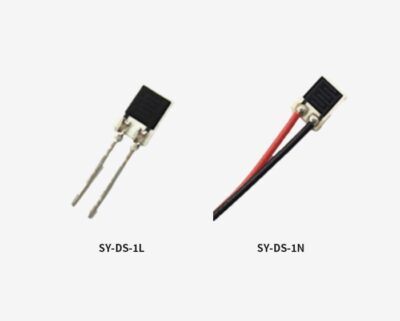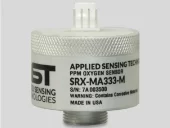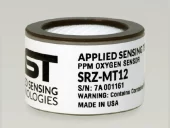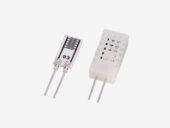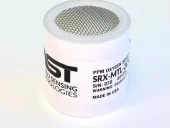Description
The sensitive layer of the dew sensor is composed of conductive particles and a hydrophilic polymer matrix with swelling-shrinkage properties.
At low RH (Relative Humidity) conditions, the space between the conductive particles is small enough to form conductive channels, so it has a low resistance.
increase of RH, the polymers swells with increased water molecules, and the space between conductive particles increases slowly, so the resistance increases.
When the RH level is above 90%, the space between conductive particles in the sensing layer increases rapidly due to the rapid swelling of the polymer.
As a result, The conductive channels barely exists, and resistance increases sharply.
Electrical Characteristics
| Resolution | 14 bit (0.01%RH) |
|---|---|
| Rated voltage | DC AC 0.8V Max. |
| Operating temperature range | 0℃ ~ +60℃ |
| Operating humidity range | 0%RH ~ 100%RH |
| Storage condition range | -20℃ ~ 85℃ |
| Standard characteristic | 10㏀ Max. at 80%RH |
| 100㏀ Max. at 93%RH | |
| 200㏀ Max. at 98%RH |
Characteristic Chart
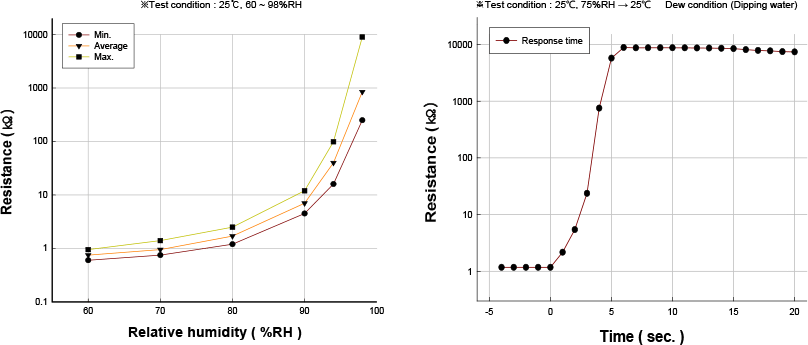
Application:
- In water treatment plants or industrial plants, to detect condensation of cold pipeline networks.
- In hangars and storage rooms to detect condensation on cold outside walls or steel doors and to protect the masonry.
- In control cabinets or machines to detect condensation on sensitive electronic components.
- In buildings with chilled ceilings or ventilation, air conditioning, and heating plants.
- In swimming pools or on shop windows around the glazing fogging with optimized use of energy or to keep free of ice.




Dew Sensor (SY-DS-1x)
Application Note:


